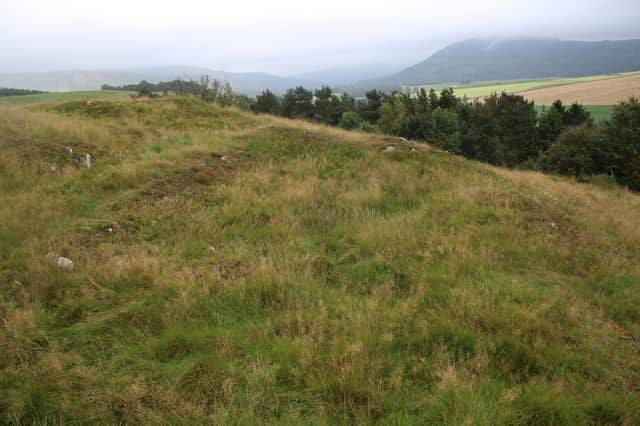Old Redhead: Saving an abandoned village that vanished from the landscape


There is not much that remains of the deserted settlement near Galashiels, where at least five houses once stood and between 10 and 20 adults are believed to have lived and worked on the slopes high above the Caddon Water.
It is known that people lived here from at least the mid-15th Century with it left behind by its residents in 1840.
Advertisement
Hide AdAdvertisement
Hide AdToday, what is left are the rough outlines of their homes as well as what was possibly a large enclosure for animals. Banks of earth mark out what were probably the land boundaries of the tenants, who likely rented their smallholdings from the powerful Pringle family.
Now, these remnants of the past are being protected by the future after they were designated as a scheduled monument by Historic Environment Scotland.
Rory McDonald, senior designations officer at the organisation, said Old Redhead was a very rare example of a deserted medieval farm settlement in the lowlands and deserved to be protected given the potential information it held about the past.
He said: “Its a fascinating place. It’s a snapshot of life on one of these rural settlements. At one point, there would have been more of these places but they will now be under existing farms or cleared away.
"It is very unusual to find one of these and you are looking at hundreds of years of history abandoned.
"When you are there, you realise you are in a place where people lived, worked, cried, loved – all the range of human emotions that we have.”
Homes at Old Redhead would have been made from timber frames and packed with a mix of clay, dung and straw.
Exchequer Rolls showed that sheep were kept at Old Redhead from the mid 15th Century with barley and oats probably also grown, along with vegetables, Mr McDonald said:
Advertisement
Hide AdAdvertisement
Hide Ad"If you couldn’t grow it or raise it, you went hungry,” he added.
Mr McDonald said it was “highly likely” that the settlement was abandoned when tenants were cleared from land as agricultural practices changed.
He added: "It seems to have gone out of use when farms were consolidated. A lot of these rural settlements disappeared as they were moved to bigger farms or it could be the case that they moved into Galashiels to take up work in the mills.”
Mr McDonald said the remains of Old Redhead could unlock valuable information about the life and times of those who lived there.
He added: “If someone came along with a sensible worked out plan to have a scientific excavation done on the site, I suspect you would have a lot of information about how these peope lived, such as what they were farming and what their diet was. I would imagine a lot of information would be buried here.
"It really is a fantastic little site and it does have the potential to tell us so much about this rural settlement and the people who lived there.”
A message from the Editor:Thank you for reading this story on our website. While I have your attention, I also have an important request to make of you.With the coronavirus lockdown having a major impact on many of our advertisers - and consequently the revenue we receive - we are more reliant than ever on you taking out a digital subscription.Subscribe to scotsman.com and enjoy unlimited access to Scottish news and information online and on our app. With a digital subscription, you can read more than 5 articles, see fewer ads, enjoy faster load times, and get access to exclusive newsletters and content. Visit https://www.scotsman.com/subscriptions now to sign up.
Our journalism costs money and we rely on advertising, print and digital revenues to help to support them. By supporting us, we are able to support you in providing trusted, fact-checked content for this website.
Joy Yates
Editorial Director